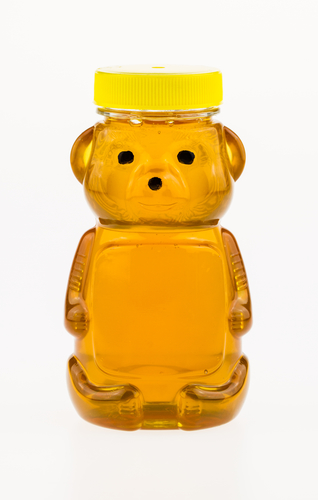Which Plastic Food & Drink Containers are Safe to Use?
 The use of plastics in your home may be unwittingly poisoning you and your family when chemicals from the plastic leach into the water or food that they contain.
The use of plastics in your home may be unwittingly poisoning you and your family when chemicals from the plastic leach into the water or food that they contain.
Each plastic container, or bottle, is labeled with a number inside of a small triangle which indicates what type of plastic it is, which is used to separate them out during recycling.
To help you identify these plastics, here is a handy chart that identifies the Good, Bad and Okay plastics and where they can usually be found.
#1. Polyethylene terephthalate (PET or PETE) (Okay)
Found in: Used to make soft drink, water, sports drink, ketchup and salad dressing bottles, and peanut butter, pickle, jelly and jam jars.
Why: Designed ONLY for single and short time use and some concerns about the antimony trioxide which can leach if beverages are in the container for too long – considered a reasonable safe plastic but nor your safest option. (Do not drink from plastic water bottles that have been stored in the trunk of your car in the summer.)
——————
#2 – High density polyethylene (HDPE) (Good)
Found in: Milk, water, and juice bottles, yogurt and margarine tubs, cereal box liners, and grocery, trash and retail bags.
Why: Not known to leach any chemicals that are suspected of causing cancer or disrupting hormones.
——————
#3 – Polyvinyl chloride (V or PVC) (Bad)
Found in: Most cling-wrapped meats, cheeses, and other foods sold in delicatessens and groceries are wrapped in PVC. Also found in cooking oil bottles and clear food packaging. (If you’re unsure, look for the little symbol that should be printed on the container. Some brands have left the symbols off, which is a major problem.)
Why: To soften into its flexible form, manufacturers add “plasticizers” during production. Traces of these chemicals can leach out of PVC when in contact with foods and drinks. According to the National Institutes of Health, di-2-ethylhexyl phthalate (DEHP), commonly found in PVC, is a suspected human carcinogen. The risk is highest when containers start wearing out, are put through the dishwasher or when they are heated (including by microwave). PVC manufacturing can release highly toxic dioxins into the environment, and the materials can off-gas toxic plasticizers into your home.
—————–
#4 – Low-density polyethylene (LDPE) (Okay)
Found in: Some bread and frozen food bags and squeezable bottles.
Why: Not known to leach any chemicals that are suspected of causing cancer or disrupting hormones, but not widely recycled as #1 or #2.
—————–
#5 – Polypropylene (PP) (Okay)
Found in: Some ketchup bottles and yogurt and margarine tubs.
Why: Hazardous during production, but not known to leach any chemicals that are suspected of causing cancer or disrupting hormones. Not as widely recycled as #1 or #1.
—————–
#6 – Polystyrene (PS) (Bad)
Found in: Disposable plates and cups, meat trays, egg cartons, carry-out containers and some toys. Foam insulation and also for hard applications (e.g. cups, some toys). Polystyrene is made into soft Styrofoam-style cups as well as rigid foams and hard plastics products, so remember to look for those little numbers in the arrows (don’t feel bad if you need a magnifying glass). Avoid using them as much as possible.
Why: Benzene, a material used in its production, is a known human carcinogen. Butadiene and styrene, the basic building blocks of this plastic, are suspected carcinogens. It can release potentially toxic breakdown products including styrene, particularly when heated! That insulated coffee cup? Not a good idea is it.
——————-
#7 – Polycarbonate (PC) (Bad)
Found in: Clear plastic baby bottles, sippy cups and water bottles, 3 and 5 gallon water containers. A wide range of plastic resins that don’t fit into the other six categories are lumped into #7. Some are quite safe, but the ones to worry about are the hard polycarbonate varieties, as found in various drinking containers (like Nalgene bottles) and rigid plastic baby bottles. AVOID #7 plastics unless you know them to not be made from Polycarbonate.
Why: Studies have shown polycarbonate leaches bisphenol A, a dangerous plastic linked to endocrine disruption and serious health conditions. PC leaches into liquids. Apparently, no level of bisphenol A exposure is known to be truly safe, and a government panel expressed ‘some concern’ that the ingredient causes neural and behavioral problems in children. And it leaches faster as the container ages.
——————–
Safety Tips:
When using plastics in the kitchen (even the safer plastics) follow these guidelines:
*Whenever possible use these safer materials instead of plastic: glass, stainless steel, silicone, bamboo or wood (coated with food-safe, non-toxic finish), ceramic (with lead free glaze).
*If you must use plastic, stick with #2, #4, or #5.
*Heat can cause any plastic to degrade, which can cause chemicals to leach from the plastic into your food.
*Do not put any plastic containers in the microwave. “Microwave Safe” only means that the item will not melt or crack.
*Preferably wash plastic items by hand instead of the dishwasher.
*High heat and harsh detergents can cause the plastic to wear down more quickly.
*Do not use scratched, cloudy or badly worn plastics with food or beverage.
*Do not store oily, greasy or acidic foods in plastic containers – Opt for glass instead.
STILL HAVE QUESTIONS? EMAIL AND GET YOUR QUESTIONS ANSWERED.
For information on health problems and what can be done, see the MCVitamins.com Index. You can also email us and get help.
Sign up to receive the MCVitamins Newsletter!
Up-to-date info on the latest health-related news happening in the world
(available in English only)

